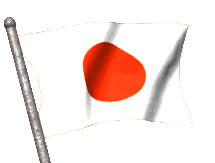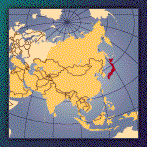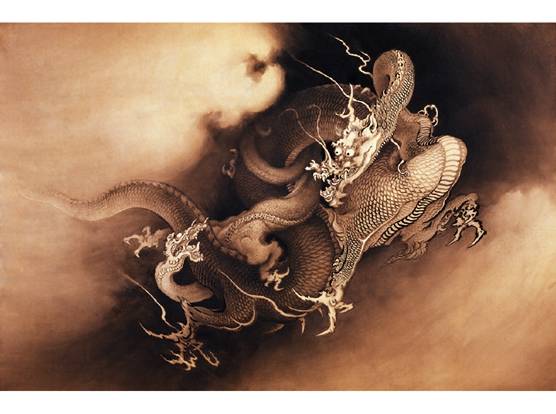Would you like to make this site your homepage? It's fast and easy...
Yes, Please make this my home page!
Economy
Economy
- overview: Government-industry cooperation, a strong work ethic, mastery
of high technology, and a comparatively small defense allocation (1% of GDP)
have helped Japan advance with extraordinary rapidity to the rank of second
most technologically powerful economy in the world after the US and third largest
economy in the world after the US and China. One notable characteristic of the
economy is the working together of manufacturers, suppliers, and distributors
in closely knit groups called keiretsu. A second basic feature has been the
guarantee of lifetime employment for a substantial portion of the urban labor
force. Both features are now eroding. Industry, the most important sector of
the economy, is heavily dependent on imported raw materials and fuels. The much
smaller agricultural sector is highly subsidized and protected, with crop yields
among the highest in the world. Usually self-sufficient in rice, Japan must
import about 50% of its requirements of other grain and fodder crops. Japan
maintains one of the world's largest fishing fleets and accounts for nearly
15% of the global catch. For three decades overall real economic growth had
been spectacular: a 10% average in the 1960s, a 5% average in the 1970s, and
a 4% average in the 1980s. Growth slowed markedly in 1992-95 largely because
of the aftereffects of overinvestment during the late 1980s and contractionary
domestic policies intended to wring speculative excesses from the stock and
real estate markets. Growth picked up to 3.9% in 1996, largely a reflection
of stimulative fiscal and monetary policies as well as low rates of inflation.
But in 1997-98 Japan experienced a wrenching recession, centered about financial
difficulties in the banking system and real estate markets and exacerbated by
rigidities in corporate structures and labor markets. In 1999 output started
to stabilize as emergency government spending began to take hold and business
confidence gradually improved. The crowding of habitable land area and the aging
of the population are two major long-run problems. Robotics constitutes a key
long-term economic strength, with Japan possessing 410,000 of the world's 720,000
"working robots".
Japan
Economy 2000
GDP:
purchasing power parity - $2.95 trillion (1999 est.)
GDP - real growth rate: 0.3% (1999 est.)
GDP - per capita: purchasing power parity - $23,400 (1999 est.)
GDP - composition by sector:
agriculture: 2%
industry: 35%
services: 63% (1999 est.)
Population below poverty line: NA%
Household income or consumption by percentage share:
lowest 10%: NA%
highest 10%: NA%
Inflation rate (consumer prices): -0.8% (1999 est.)
Labor force: 67.76 million (November 1999)
Labor force - by occupation: trade and services 65%, industry 30%, agriculture,
forestry, and fishing 5%
Unemployment rate: 4.7% (1999 est.)
Budget:
revenues: $463 billion
expenditures: $809 billion, including capital expenditures (public works
only) of about $94 billion (FY00/01 est.)
Industries: among world's largest and technologically advanced producers
of motor vehicles, electronic equipment, machine tools, steel and nonferrous
metals, ships, chemicals; textiles, processed foods
Industrial production growth rate: -0.1% (1999 est.)
Electricity - production: 995.982 billion kWh (1998)
Electricity - production by source:
fossil fuel: 56.68%
hydro: 8.99%
nuclear: 31.93%
other: 2.4% (1998)
Electricity
- consumption: 926.263 billion kWh (1998)
Electricity - exports: 0 kWh (1998)
Electricity - imports: 0 kWh (1998)
Agriculture - products: rice, sugar beets, vegetables, fruit; pork,
poultry, dairy products, eggs; fish
Exports: $413 billion (f.o.b., 1999 est.)
Exports - commodities: motor vehicles, semiconductors, office machinery,
chemicals
Exports - partners: US 31%, Taiwan 7%, China 5.5%, South Korea 5.4%,
Hong Kong 5.2% (1999)
Imports: $306 billion (c.i.f., 1999 est.)
Imports - commodities: fuels, foodstuffs, chemicals, textiles, office
machinery
Imports - partners: US 22%, China 14%, South Korea 5.1%, Australia
4.2%, Taiwan 4.1% (1999)
Debt - external: $NA
Economic aid - donor: ODA, $9.1 billion (1999)
Currency: yen
Exchange rates: yen per US$1 - 105.16 (January 2000), 113.91 (1999),
130.91 (1998), 120.99 (1997), 108.78 (1996), 94.06 (1995)
Fiscal year: 1 April - 31 March


Welcome
to the world of Japan, this work that you see here is not my work I got it from
someone else on hte internet.Japan Introduction 2000 - Flags, Maps, Economy,
Geography, Climate, Natural Resources, Current Issues, International Agreements,
Population, Social Statistics, Political System, sorry this is not my work but
I just changed it a little. Thank You.



